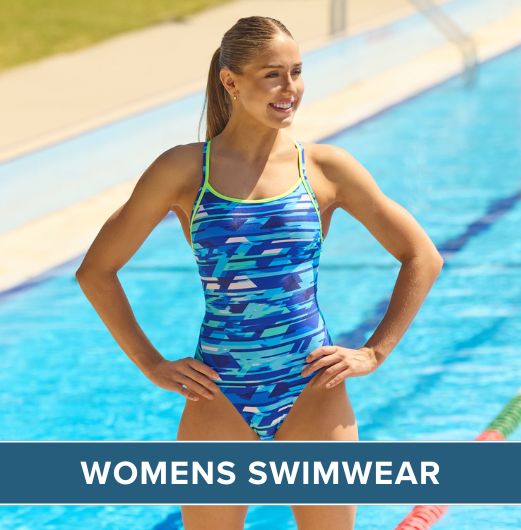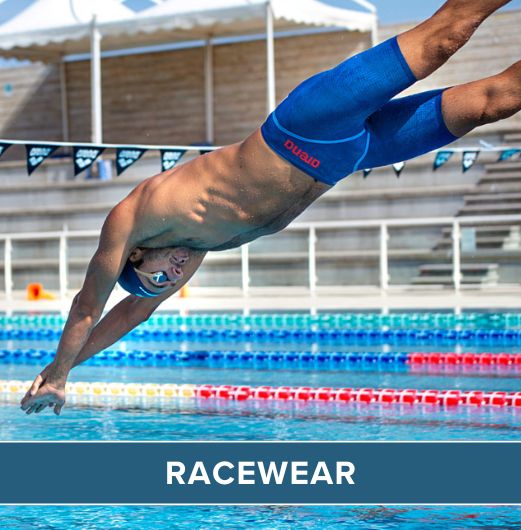We've previously looked at how to teach your infant and how to teach your toddler to swim, so in another collaboration series with Puddleducks, today we're running you through a few key tips when teaching your child to swim. This advice is ideal for children aged between 2 years and 5 years.
Using Woggles
This is a demonstration of how we use two short woggles to help promote your young child's independence in the water and develop reaching, and leg kicks. Use two short woggles rather than fixed floatation such as armbands or rubber rings because it encourages your child to find their own independence in the water. It also gives them more ability to find their own buoyancy and freer movement in the water to use their arms and legs much more easily. Children can also become over-reliant on fixed floatation, especially armbands, so we really want your child to be on independent floatation devices. Short woggles are ideal because they provide the minimum amount of flotation for them to be able to move safely in the water. Start your child with one woggle under each arm, with them placed halfway along each woggle so that they are well-balanced front to back. You can then be in front of them giving very light finger touch on the woggles to give your child more confidence, but really at this age children can be completely independent on two short woggles. With a more confident child, you can come to the side of them so that you can help with the developing leg kick and arms to help with propulsion. It's really important to give your child as much independence as possible. Using pool toys is then a great way to get your child reaching and it gives them a great target to aim towards, which helps to extend their independence. Once they become confident, remove one of the woggles, and put the remaining woggle across the chest and under each arm of your child. With a developed leg kick, your child can support themselves across the chest but they have to work a little harder which is great practice for them. They're also having to control their own balance and buoyancy better. With the single woggle, it leaves their arms much freer to enable your child to develop a longer and more reaching arm pull to help with their propulsion.
How To Tread Water
This is such an important life preservation skill because if a child were to fall in the water beyond their depth, if they can tread water it means that they can stay afloat for long enough to call someone or for help to arrive. To start learning this skill one short woggle is needed. This is placed under your child's arms and encourage your child to look up to the sky and use both their arms and legs to turn, turn, turn in the water. We use analogies such as riding a bicycle to get that idea of constant motion and turning in the water. As a parent, you are involved with a light touch on your child's hips just to help them with the turning motion, but also to keep them upright in the water so that their legs are generally pointing straight down towards the bottom of the pool. Children can have tendency to roll backwards or forwards in the water so it's important they learn to stay upright. As your child's confidence starts to develop and they are able to turn independently on one woggle, you should then remove that woggle and your role will become significantly more important. Again, encourage your child to look up towards the sky and use both their arms and legs to keep that constant rotation and movement in the water. Your role as a parent again is to support their hips and to make sure they aren't taking excessive submersions as with no woggle their buoyancy will be much lower and your child will have to work harder to keep themselves above the water. Encourage your child to turn, turn, turn using their arms and legs while you help to keep their head above the water as much as possible, and help keep them upright. As they get more confident, your involvement can lessen to a point where you aren't needing to support them at all. But we do want to stress that while this skill will make your child much safer in the water, they should be supervised in the water at all times.
How To Get Out of the Pool
There are two methods of getting out of the pool that we want to talk about today. Firstly using the bar and the wall, and then also using ladder steps. When climbing out using the wall, the objective is to get your child climbing out as independently as possible. When using the wall or a bar, we encourage you to create a 'step' for your child using your leg bent underneath them. They can then use this 'platform' to independently push themselves up from with their legs, and then utilise their upper body strength to pull themselves out of the pool. They should then sit down at the end of the pool while waiting for you to get out of the pool next to them. With the ladder steps you should encourage your child to hold on tight to the handrails, then put both of their feet onto the bottom step. This gives them four points of contact on the steps. Then encourage them to move slowly, one step at a time and only move one part of their body at a time to make sure that there are always 3 points of contact with the ladders. You should stay close at all times but your child should be independent when doing this to help build their confidence and learning. Once they are on the pool side, your child should walk away from the pool and turn back aroud to face the pool so that they know where the water's edge lies. You can then exit the pool to join your child.
Turning in a Pool
Learning to turn is such an important skill for little ones because if they were to fall in the water, we want their first instinct to be to turn back to where they have just come from and kick back to the side until safety arrives. To start this process, in the middle of the pool support your child facing away from you and keep their head above the water. Then get your child to turn, turn, turn towards you. The next progression from this is turning away from the wall. This puts the control back into your child's hands. They start off by holding the side of the pool, with you standing close by. Then encourage your child to turn, turn, turn away from the wall. Your child's head should turn first, then the shoulder, and then they may extend their arm. You can help with any of these stages but your child should be encouraged to continue holding on to the wall until you say their name followed by 'ready, push'. This makes sure that they learn to only push when they are told to. As their confidence builds, you should move on to more head down swimming so we can introduce sinking rings and items at the bottom of the pool so that their head goes into the water and their alignment and kicking improves. Turning is a really important skill but it's also great for children's confidence as its a big step for them to be able to push away from the side of the pool towards their parents.
Getting Into the Pool
There are tow main ways of getting your child into the water that we want to talk about today. The first is a seated swivel entry To start this method of entry into the water, parent and child should sit side by side at the edge of the pool, you should then reach across your child and swivel across them and face them as you enter the water. This is so that your child is never in the water on their own. Once you are in the water, encourage your child to independently enter the water. To do so they should turn onto their front and wiggle down into the pool slowly whilst always holding on to the side. Again, you should be there for security but always encourage as much independence as possible from your child. The other method is using the ladder steps. You should also enter the water first with this method so that your child is never in the water alone. You should demonstrate to your child how to enter the water as you do it yourself, turn to face away from the water and hold on to the hand rails at all times. Then one foot at a time, move downwards on the steps. Once you are in the water stay close to the steps and encourage your child to enter the same way in which you did. Again, there shouldn't be a need to hold onto your child unless they are struggling as you want to encourage independence.
Back Floating
Floating on their back is a great skill for children to learn as it builds their confidence and from a life preservation point of view, it is good for their breathing. Being still in the water is unusual for children and it can take a lot of practice to build up this skill and for them to become comfortable with these basic activities. Start off with your child's head resting on your shoulder, with your shoulder just below the water's surface so that your child is laying flat and as relaxed as possible. Initially you should support them with your hand underneath their lower back as they lay in the water. They can position themselves either as a starfish shape or a straight pencil, but they will find it difficult to keep their balance and lie still to begin with and as you wean away your supporting hand underneath them. Once their confidence starts to grow, bring them across your body, with one hand underneath their head and the other underneath their lower back. To build their skills at this point, you should remove your hand underneath their lower back first, while encouraging them to keep their tummy up. Then as they develop you can then start to try removing your hand from underneath their head. But at this point your child ma want to stand up in the water because they won't trust their own ability to float. This is where you need to start practicing this skill over and over again until your child is confident in their floating.
Holding And Moving Along The Side of the Pool
Once your child is able to hold on to the side and move their way to an exit, they are well on their way to being water safe. The key point here is to encourage your child to hold onto the side, then move along the side with a hand-on-hand motion. Once again, always be there for support in case your child needs it, but by this age your child should be able to move themselves along the side of the pool safely.
Back Swimming
Swimming on their back is an important life skill for your child to learn as once they are comfortable doing so, it means that their airway will be clear in the event of the need for using life preservation skills. As with learning to float on their backs, this is a skill that requires a lot of patience and practice. As with the floating skill, start with their head resting on your shoulder, but with a long woggle supporting their lower back, then slowly walk backwards with your child floating on the water. As their confidence grows, encourage them to kick their legs to create their own movement in the water, and then as their confidence grows again, remove their head from your shoulder and rest it in your hands. As you continually practice this skill, their confidence will grow enough to enable you to remove support and allow them to swim independently on their back. You can find more helpful advice videos like this over on our YouTube channel.
 Free Tracked UK Delivery
Free Tracked UK Delivery Hassle Free Returns
Hassle Free Returns Next Working Day OPTION
Next Working Day OPTION Found It Cheaper?
Found It Cheaper?













